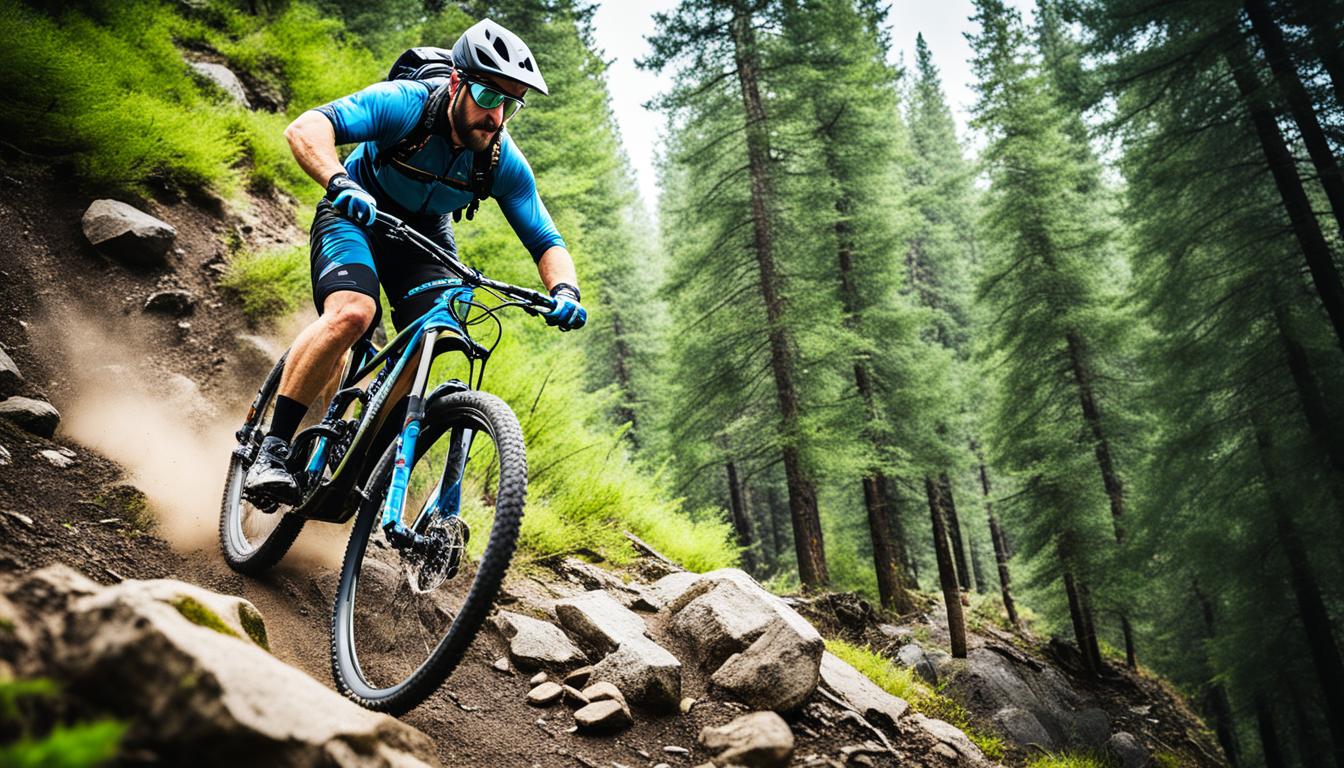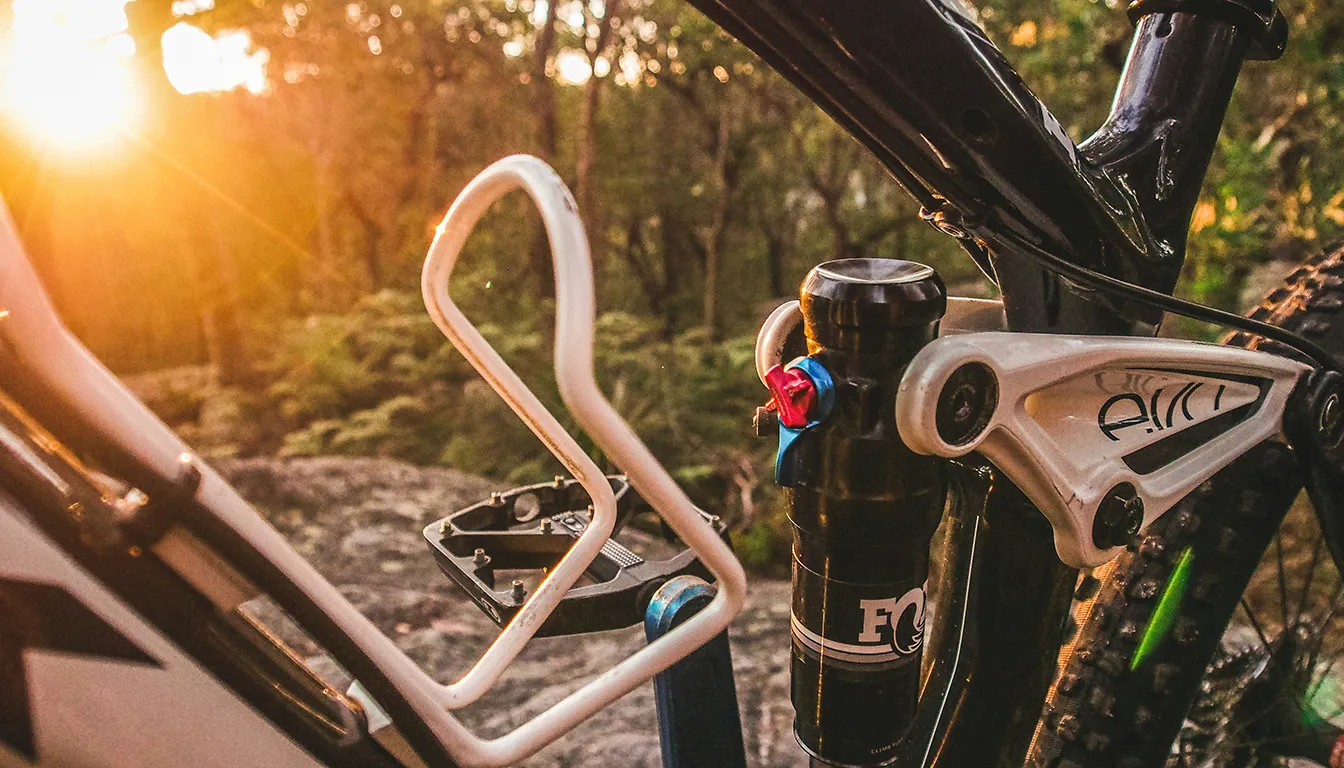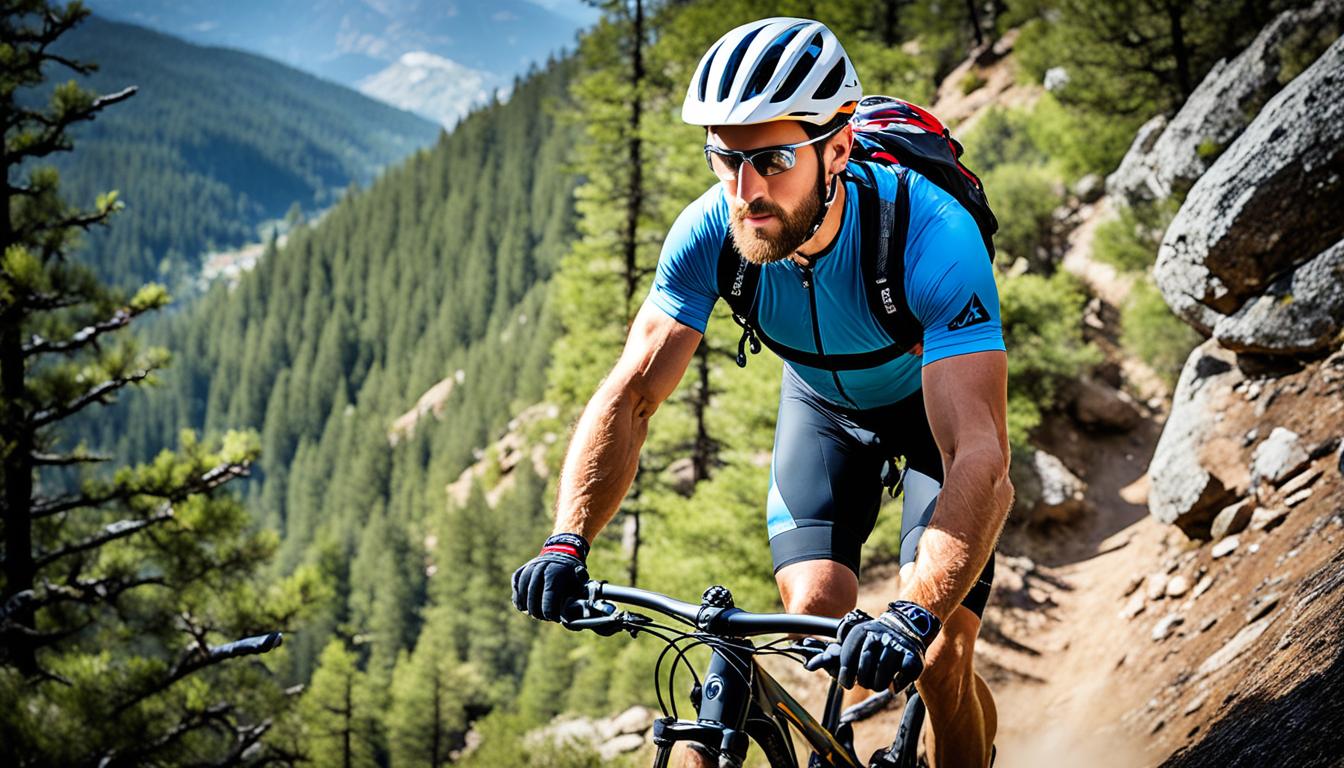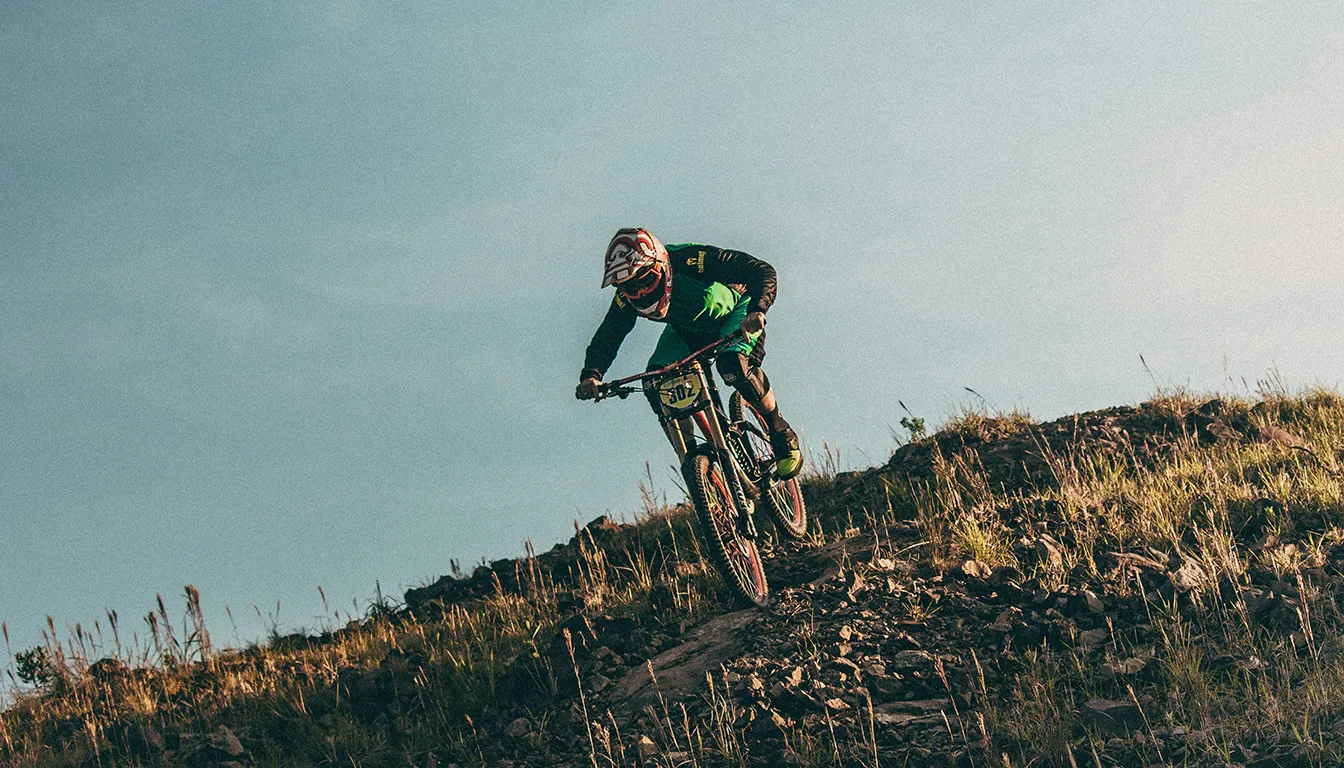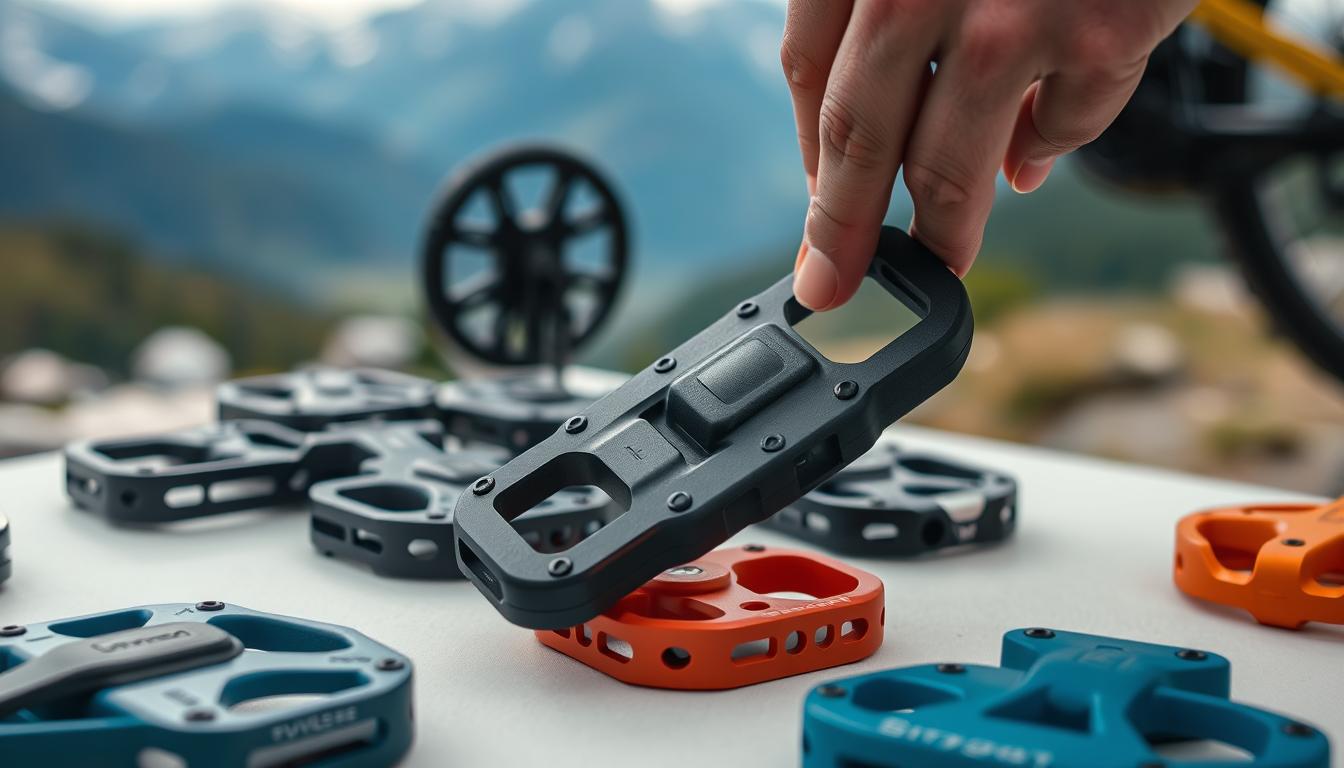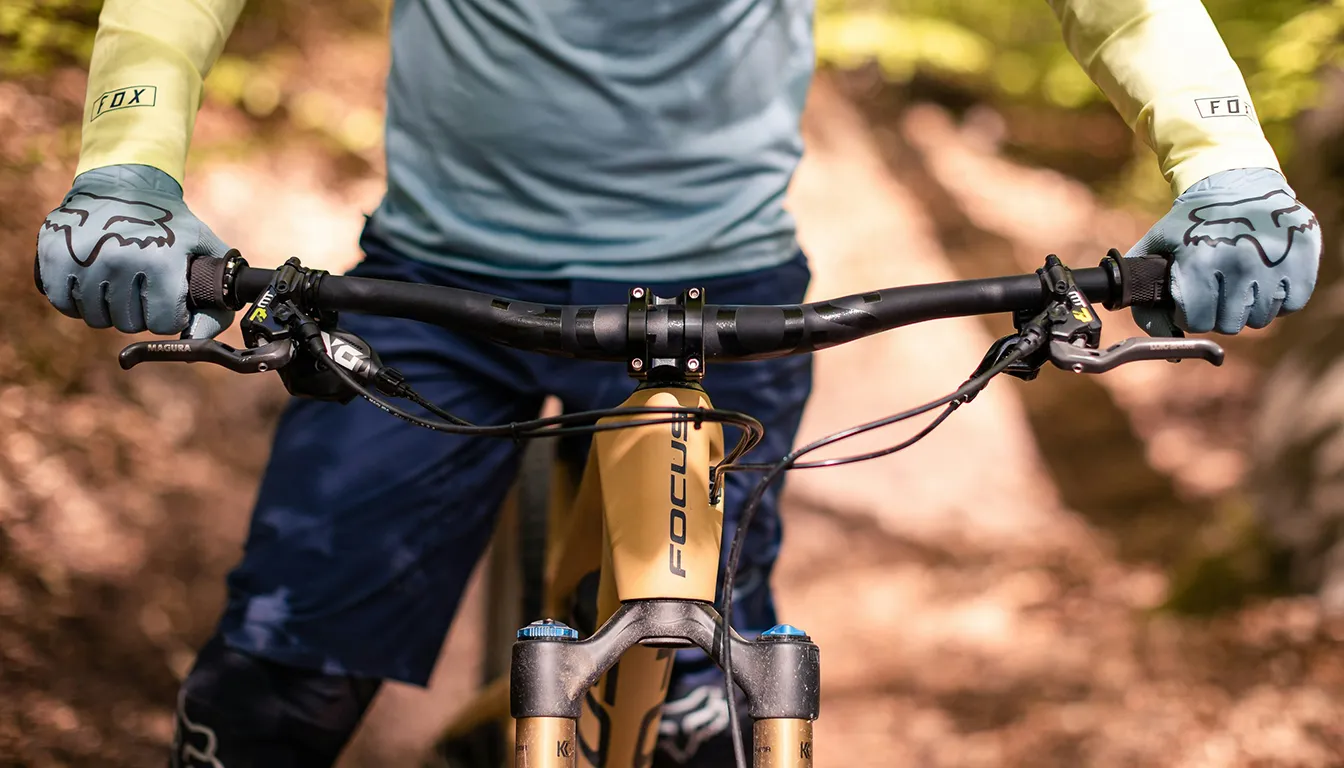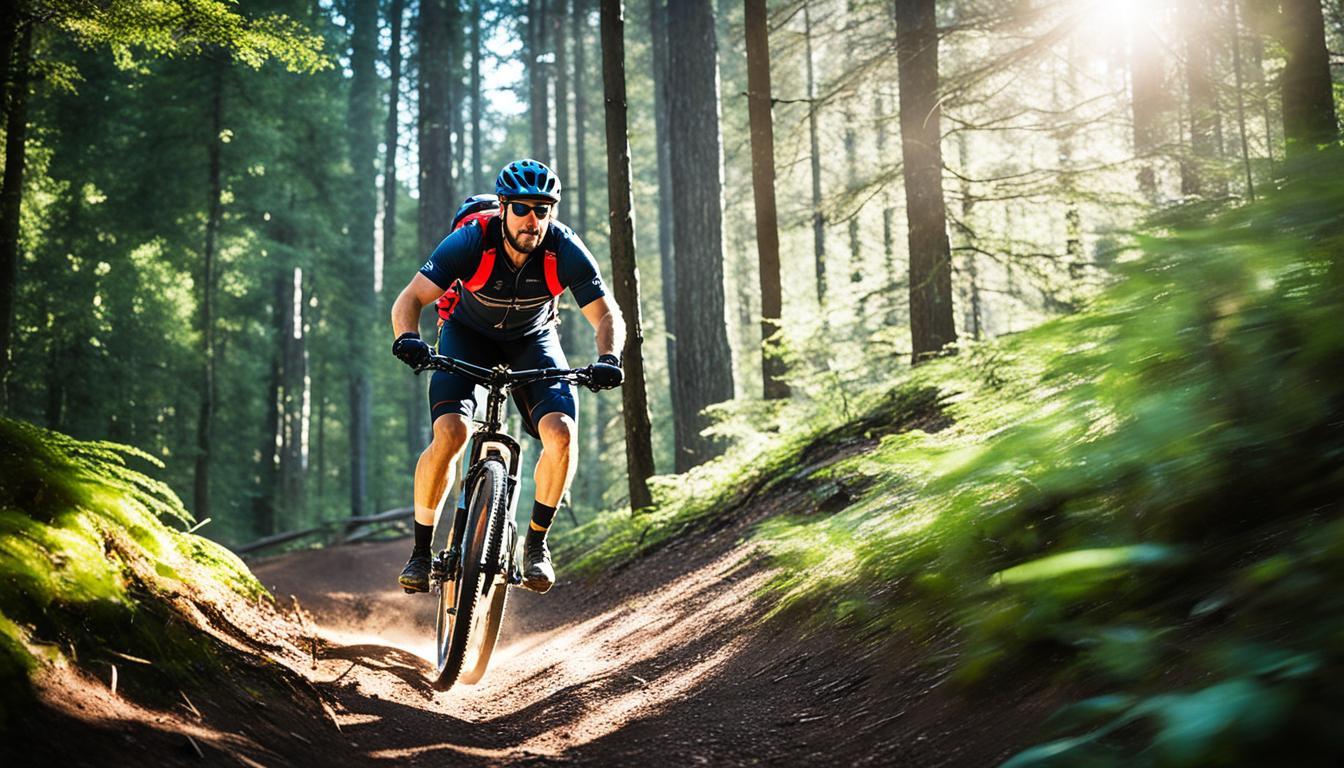Trail mountain biking lets you explore the UK’s stunning landscapes. It tests your skills and boosts your confidence. If you’re new to this exciting activity, it’s important to follow key tips. They ensure you have fun and stay safe. These tips help you get better at handling your bike. They also teach you about staying safe and looking after the environment.
Getting ready before you head out is crucial. Learn about your bike, like how it should fit you. You should be able to bend your knees slightly when you sit. Also, avoid riding if you’re feeling tired. Being well-rested helps you avoid mistakes out on the trail.
Wearing the right gear matters a lot. For example, gloves help you grip the handlebars better. They stop sweat from causing slips. It’s also key to drink water to stay hydrated. Many bikers forget about this. With these tips, you’re all set for a great adventure in trail mountain biking.
Understanding Trail Mountain Biking
Trail mountain biking is an exciting sport. It blends adventure with a deep appreciation for nature. To understand trail definition, think about both the paths bikers take and their experiences. Bikers explore a variety of types of MTB trails. These cater to different skill levels and tastes. From easy singletrack paths for starters to technical rocky trails for experts, there’s something for everyone.
Green trails are perfect for beginners, providing a smooth start for all fitness levels. As bikers get better, they move on to blue trails, which need basic off-road skills. For those looking for more, red trails offer a real test of stamina and skill. Black trails are the toughest, requiring advanced skills and top fitness. For pros, orange bike parks have special obstacles to conquer.
Different biking environments challenge riders in unique ways. One might ride through forests, rocky landscapes, or mountains. Each setting calls for its own techniques and plans. Trail bikes are designed for this diversity, with 120-140mm of travel. This helps handle challenges smoothly. Choosing the right tyres and suspension affects performance, making the ride better.
Essential Gear for Trail Mountain Biking
Picking the right gear for mountain biking is key to a fun time on the trails. Start with a quality hardtail mountain bike, which costs over $1,000. It’s a budget-friendly choice that’s easy to handle for beginners. If you’re heading to tougher trails, consider a full-suspension mountain bike. They start at $1,500 and offer better comfort and control.
Look for a bike that has at least 100mm of suspension travel front and back. This makes the ride smoother on rough trails. You can choose between 27.5-inch or 29-inch wheels, depending on your riding style and preferences.
Don’t forget about the right protective gear. A good mountain bike helmet is essential for safety, especially one that covers the back of your head. For downhill rides or bike parks, a full-face helmet is better for added safety. Full-finger gloves are also recommended for a better grip and vibration protection.
It’s important to have the right bike accessories too. A repair kit with essentials like a tubeless tire plug kit, spare tube, mini pump, multitool, and tire levers is a must-have. This kit helps with quick on-trail fixes. And to keep your energy up, always stay hydrated with a hydration pack or water bottles.
For beginners, extra protective gear like elbow and knee pads is smart as you try more difficult trails. Sunglasses protect your eyes from sun and debris, improving visibility and comfort.
What you wear makes a difference in your comfort level. Go for baggy shorts over padded Lycra shorts, with a loose jersey. This outfit adds to your freedom of movement and enjoyment. Don’t forget a cycling GPS, trail map, or mobile app for navigation. It helps track your routes and ensures you can find your way back safely.
For a full gear list, see essential mountain biking essentials. Each item helps make your ride safer and more fun.
Top Trail Mountain Biking Tips for Beginners
Mountain biking is a thrilling sport for newbies. Knowing basic techniques can make your rides better. These tips aim to boost your confidence and safety on trails.
Maintaining Momentum
Momentum is key on tough trail parts. It helps with balance and control. By focusing on speed and manoeuvring actively, you’ll handle rough paths well.
Shifting Your Weight
How you shift your weight affects riding. On climbs, move your weight forward. When going downhill, lean back. This helps with control. Also, a well-fitting bike prevents strain and boosts comfort.
Adjusting your seat height helps too. It avoids back and knee pain on long rides. Remember these tips for better performance.
Looking Where You Want to Go
Looking ahead is crucial for good riding. Focus on the path, not the obstacles. This helps you ride smoother.
Watching videos like GMBN’s can show you how. It’s about choosing the right path. This saves effort and time.
Using these basic tips will improve your biking skills. You’ll feel more confident too. Keep practising, and you’ll tackle harder trails soon.
Trail Preparation and Safety
Getting ready for a mountain bike trip boosts both safety and fun. A good prep routine gets you and your bike set for trail challenges and excitement. By checking everything beforehand, you can cut down risks and have a great time.
Checking Your Bike
Always check your bike before heading out. Make sure to look at brakes, gears, and tires to see they work well. Using the M-check method helps find any problems. Keeping your bike in good shape reduces accident risks and makes rides enjoyable.
A correct helmet is a must for safety, potentially cutting serious head injuries by 70%.
Packing the Essentials
Packing right is key for a mountain biking day. Here’s what you should have:
- Water and snacks to keep you energized and hydrated. Think carb-rich meals or quick energy gels.
- Basic repair tools for fixing any sudden bike issues.
- A first aid kit for handling minor injuries or emergencies.
- Appropriate clothes for the weather to keep your performance up.
- GPS or bike computers for monitoring your ride’s stats.
Start on easy trails and work up to harder ones at your own pace. It’s safer and more fun to ride with others. Plus, doing safety checks each time keeps biking safe.
Conclusion
As we sum up this mountain biking recap, it’s clear that the right skills and readiness greatly boost your fun. Picking trails that match your skills and knowing key riding techniques are vital. Starting with easier paths helps you get better before you try harder ones.
Make sure you wear the right gear for safety and comfort. Helmets and gloves can lower injury risks. It’s important to stay hydrated and eat well; bring enough water and snacks. Knowing how to fix a flat tyre is also crucial. For more tips, check out mountain biking tips for beginners.
Being in the biking community makes the experience better. Riding with others offers support and lets you learn from them. Focus on safety, respect for trails, and getting better. Each challenge is a chance to learn, making you a stronger and more confident rider.
FAQ
What should I look for when choosing a mountain bike for trail riding?
Consider the bike’s frame geometry, type of suspension, wheel size, and its weight when choosing a bike. A good fit makes riding on various trails more comfortable and easier to control.
How do I improve my biking skills as a beginner?
Begin with basic biking techniques like keeping momentum and shifting your weight. Get to know your trails well. Then, try different types of trails to grow your skills and confidence.
Why is wearing a helmet important in mountain biking?
A well-fitted helmet is crucial for safety on rides. It protects your head if you fall or crash. Always wear a helmet as part of your biking gear.
What are the different types of mountain biking environments?
Mountain biking terrains vary from forest paths and rocky grounds to mountainous areas. Every setting has its challenges. They need specific skills and tips, especially for beginners.
How can I ensure a safe and enjoyable trail ride?
Preparation is crucial. Perform a detailed bike check. Ensure you have water, snacks, and wear weather-appropriate clothes. This prep boosts safety and the fun of your ride.
What should I include in my mountain biker’s checklist?
Your checklist should have a hydration pack, multi-tools, puncture repair kits, snacks, and a first-aid kit. These essentials prepare you for any situation on the trail.
How do I handle difficult obstacles on the trail?
When facing obstacles, keep up your speed and manage your weight well. Look ahead, not just at the obstacle. Practice shifting your weight to better manage your balance and bike control.
